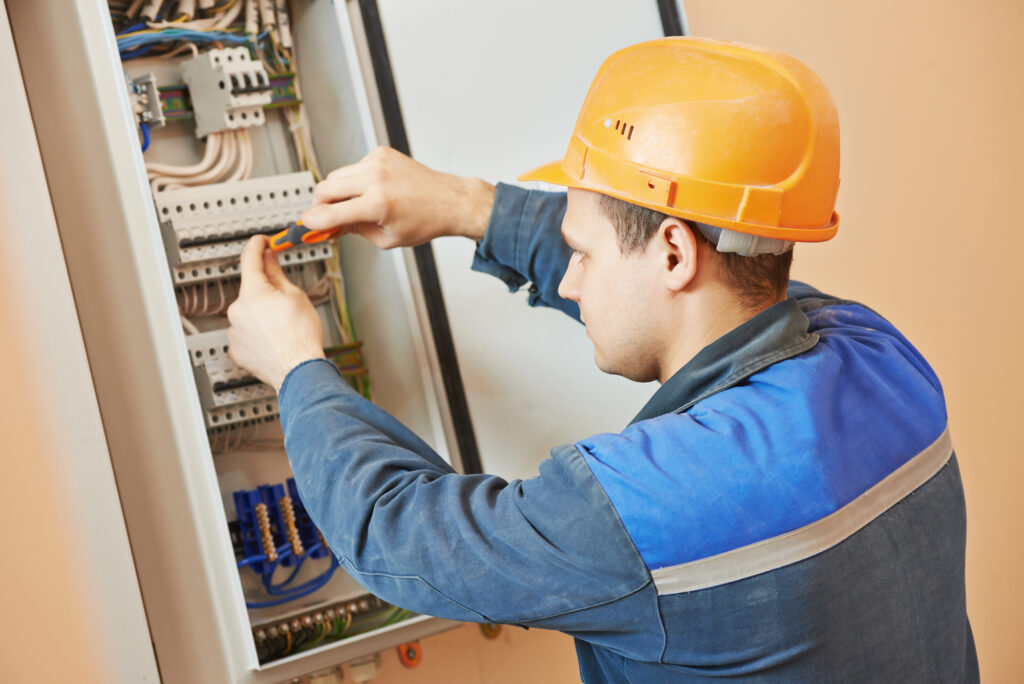Circuit breakers are the often overlooked heroes of your electrical system. They act as your home’s safety net, preventing electrical fires, circuit damage, and wiring issues by automatically cutting off power when a fault is detected. But circuit breakers have a lifespan like most essential components in any system.
Ever wonder how long your circuit breaker will last and what you can do to ensure it works efficiently? This guide will explain the factors affecting its lifespan, common signs of failure, maintenance tips, and when it’s time for a replacement.
Factors Affecting Circuit Breaker Lifespan
On average, a circuit breaker can last anywhere from 20 to 40 years. However, how long your will last depends on several factors.
1. Frequency of Use
Circuit breakers that trip often are under constant stress. The more cycles of tripping and resetting they experience, the shorter their lifespan will be. Heavy usage, especially in areas supporting appliances like HVAC systems or machinery, accelerates wear and tear.
2. Quality of the Breaker
High-quality breakers are built to last. Trusted brands like Siemens, Square D, and Eaton typically offer products with stronger components and better durability. Cheaper options may save money upfront but might require earlier replacement.
3. Environment
Extreme temperatures, high humidity, and exposure to corrosive elements can significantly impact a breaker’s longevity. Corrosion and moisture can damage the internal mechanics of your breaker, while excessive heat can cause components to deteriorate faster.
4. Electrical Load
Breakers operating near their maximum load capacity most of the time are more prone to premature failure. An overloaded circuit puts immense strain on the breaker and can lead to overheating or damage over time.
Knowing these factors can help you gauge how long your circuit breaker might last and ensure your home or workplace remains electrically safe.
Signs of a Failing Circuit Breaker
A faulty breaker can be dangerous, as it may fail to trip when needed, leaving your electrical system vulnerable to overheating or fires. Watch out for these warning signs that your circuit breaker may be failing:
1. Frequent Tripping
If a breaker trips more often than usual, it may indicate that it is nearing the end of its life or cannot handle the circuit’s load anymore.
2. Burning Smell
A faint burning or acrid odor near your electrical panel is a serious red flag and could indicate overheating or damaged internal parts within the breaker.
3. Visible Signs of Damage
Blackened, charred, or melted components around the breaker are signs of overheating. Frayed wiring or corrosion is another warning that the breaker or surrounding setup might be compromised.
4. No Power to Outlets
If certain outlets or devices don’t receive power even after resetting the breaker, there could be an issue with the breaker itself or the wiring connected to it.
5. Age
While age alone may not cause problems, circuit breakers past their 20–30-year mark might start showing signs of wear and reduced reliability.
Addressing these issues is critical to ensure your safety and maintain the functionality of your electrical system.
How to Extend Circuit Breaker Lifespan
The good news is that proper care and maintenance can extend the life of your circuit breaker and reduce the likelihood of failure. Follow these tips to protect this crucial component of your electrical system:
1. Avoid Overloading Circuits
Spread out the use of high-power devices across multiple outlets and circuits. Avoid plugging too many devices into a single outlet or power strip.
2. Regularly Inspect Your Panel
Have an electrician inspect your breaker panel annually for signs of wear, corrosion, or loose connections. Proactive inspections can catch potential issues before they escalate.
3. Keep the Area Dry and Cool
Ensure your electrical panel is installed in a dry, temperature-controlled environment. Avoid placing it near moisture-prone areas like bathrooms, kitchens, or uninsulated basements.
4. Upgrade Your Electrical System as Needed
If you’ve recently added new appliances or home extensions, consult an electrician to ensure your existing electrical panel can handle the increased load.
5. Use Compatible Devices
Ensure any new circuit breakers or replacement parts are compatible with your existing electrical system to prevent strain or mismatched installations.
Proactive care can save you time, money, and stress while keeping your home or business safe.
When to Replace a Circuit Breaker
There’s a big difference between a breaker tripping occasionally and one that constantly malfunctions or shows signs of damage. Here’s how to know when it’s time to replace it instead of resetting it.
1. When It No Longer Resets
Breakers that fail to reset after tripping may be permanently damaged and require replacement.
2. Persistent Overheating
If the breaker panel or switch consistently feels hot to the touch, it could signal internal issues that warrant immediate replacement.
3. Outdated Panels
Older breaker panels, such as those with fuse-based systems or outdated brands like Federal Pacific or Zinsco, may no longer meet modern safety standards and should be upgraded.
4. Frequent Unexpected Shutdowns
When your breaker interrupts power without any load issues, this may reflect internal damage or component failure.
If you’re unsure, consult a licensed electrician. They’ll help you determine whether the issue lies with your breaker, wiring, or electrical panel.
Stay Safe and Extend the Life of Your Circuit Breaker
A functioning circuit breaker is a key safety feature for your home or business. Ensuring its longevity comes down to understanding the factors that affect its lifespan, recognizing the signs of failure, and following regular maintenance practices.
When in doubt, consult with a trusted electrician to assess your system and ensure everything is running smoothly. Remember, the safety of your electrical system isn’t something to gamble with.
Need professional advice or help with your circuit breakers? Reach out to our team of licensed electricians for guidance and care. Safety starts with proactive maintenance, and we’re here to help you every step of the way.


